A circular structure silhouetted on a hill in Maremma, with twelve swings facing the horizon: entitled La dodicesima altalena (The Twelfth Swing ) is the site-specific work by Francesco Arena, inaugurated Saturday, June 28, at 6:30 p.m. in the spaces of Terre di Sacra, in Capalbio Scalo (Grosseto). The project is part of the 2025 program of Hypermaremma, a platform that for years has been promoting contemporary art interventions in the territory of the Tuscan Maremma.
The installation takes the form of a large collective work. The twelve swings form a circle suspended in the natural landscape, a device that recalls both childhood and the conceptual practices of contemporary art. The work, in its playful and interactive dimension, asks to be acted upon, activated. The visitor, to understand it, must use it. It is in the swinging movement of the body that a movement of thought also takes shape, stimulated by an environment that blends matter, landscape and reflection.
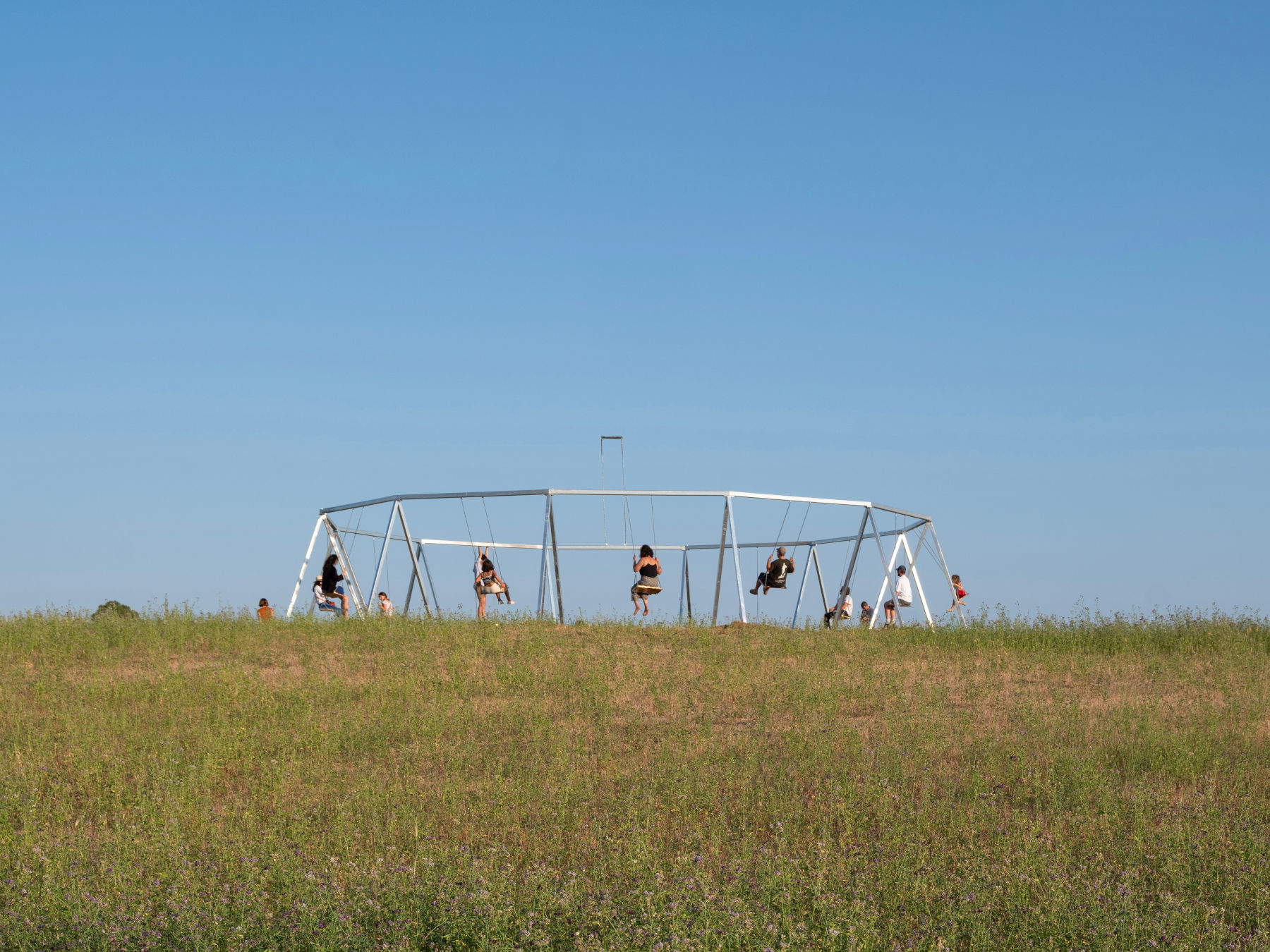
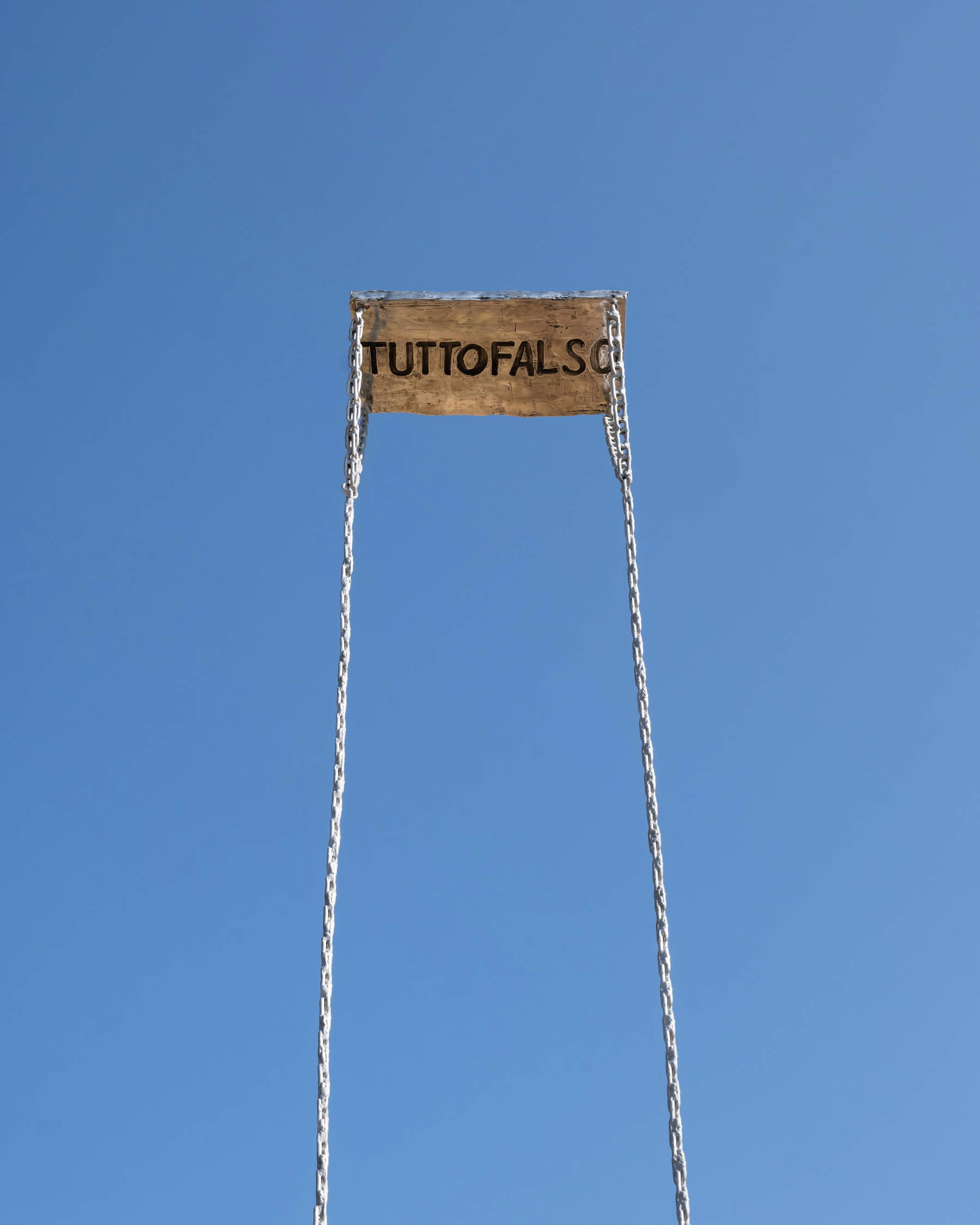
Made at the Fonderia Artistica Battaglia in Milan, among the oldest European foundries still active in the production of contemporary art, the swings were cast in bronze. Eleven of them each bear an engraving: sentences that take the form of statements of truth. These are sentences elaborated by Arena himself or taken from texts of relevant historical figures. The choice of bronze, the material par excellence of monumentality, helps to give these sentences an aura of absoluteness, as if they were carved in collective memory. But the balance between stability and certainty is challenged by one crucial exception: the twelfth swing. Unlike the others, it has no engraving. It is mute. A presence that, precisely through its absence, introduces a note of doubt, a fissure in the seemingly firm framework of the other eleven. In this short circuit between affirmation and suspension, Arena suggests a broader reflection on the nature of truth and the value of questioning it.
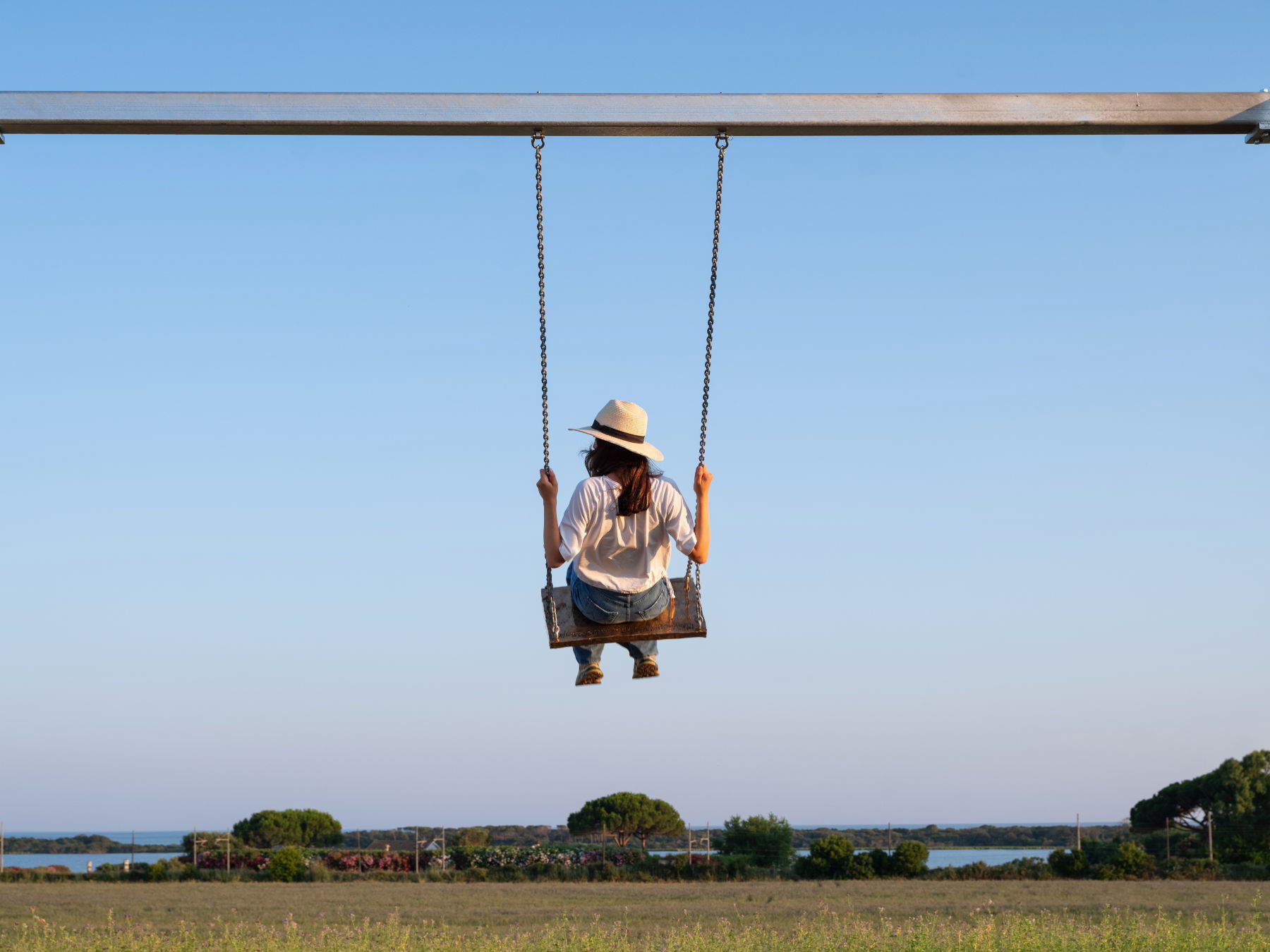
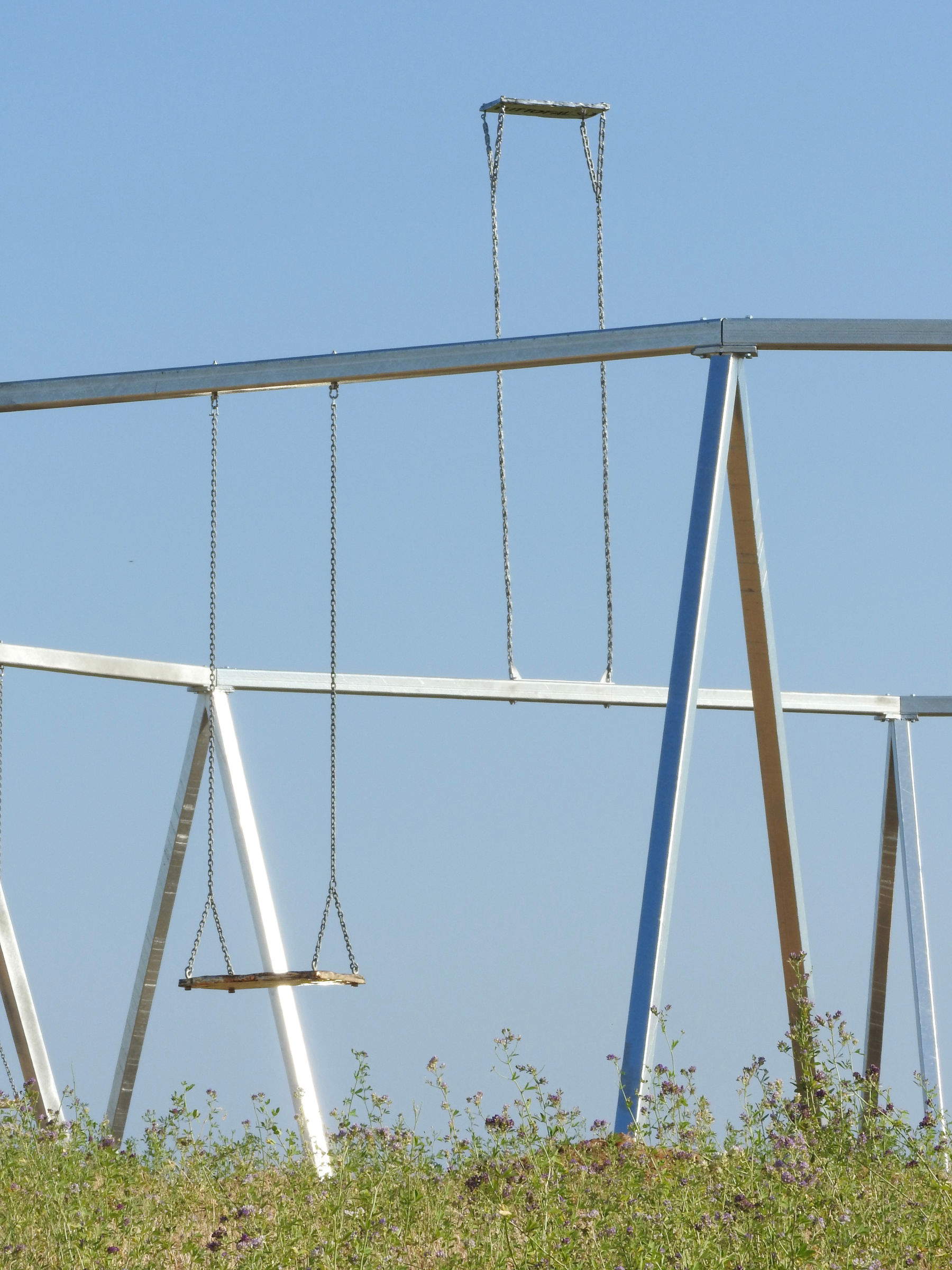
The work therefore takes the form of a structure in unstable balance, which stages a constant tension between affirmation and relativization, between concept and body, between gravity and lightness. The user, in rocking, becomes an active part of the work, experiences matter and thought in a single gesture.
The project, produced by Hypermaremma therefore aims to enhance the Maremma territory through artistic interventions that are both rooted in the landscape and capable of activating new readings of the present. Fundamental, in the realization of the work, was the contribution of public and private entities: from the Region of Tuscany, which supported the project as part of the ToscanaInContemporanea - GiovaniSì 2025 initiative, to Fonderia Artistica Battaglia, a point of reference in bronze sculptural realization; from Mar.Sid. to Terre di Sacra, passing through Galleria Raffaella Cortese in Milan.
Francesco Arena, born in Puglia in 1978, lives and works in his home region. His research is expressed through sculptures and installations that elaborate and reinterpret the formal and conceptual legacy of art movements of the 1960s, such as American Minimal art and Italian Arte povera. These languages are reinterpreted by the artist in light of his own biographical and intellectual experiences, according to a method that he himself has defined as a layering of images and intentions.
At the center of his practice are themes related to contemporary history, explored in its collective repercussions but also in its connections with personal experience, his own or that of others. A distinctive feature of his work is the use of number and measurement as objective tools to observe and narrate political and historical events. These elements, far from mythologizing the past, become devices capable of provoking questions and stimulating the critical gaze of the public.
His permanent public works can be found at the Colosseum Archaeological Park, the Khao Yai Art Forest and the city of Parabita. Arena has also exhibited in numerous international institutions including the Bangkok Art Biennale, Walker Art Center in Minneapolis, Metropolitan Museum of Manila, MAXXI in Rome, Museo Madre in Naples, LV Venice Biennale, CaixaForum in Barcelona, Kunstmuseum St. Gallen, Art Basel’s Unlimited, Fondazione Merz and the Milan Triennale. He has also collaborated with the Castello di Rivoli, FRAC Champagne-Ardenne in Reims, Fondazione Sandretto Re Re Rebaudengo, Fondazione del Roscio, Sprovieri in London, Galleria Raffaella Cortese and Fonderia Artistica Battaglia in Milan, to Bar Cremona.
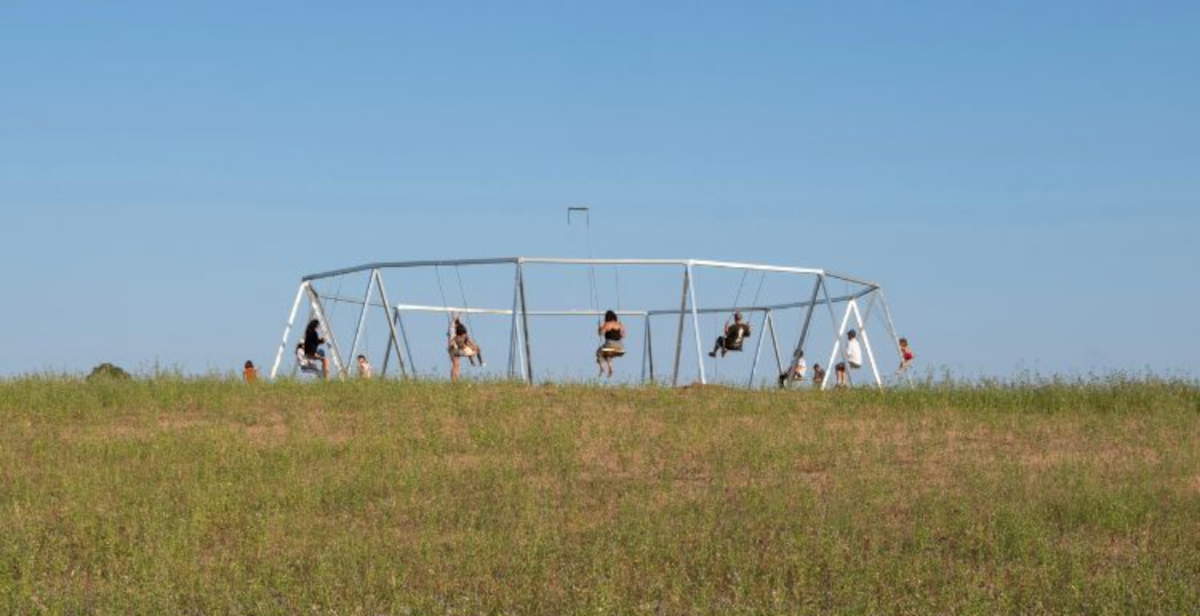 |
| Twelve swings in the Maremma: Francesco Arena's site-specific work in Capalbio |
Warning: the translation into English of the original Italian article was created using automatic tools. We undertake to review all articles, but we do not guarantee the total absence of inaccuracies in the translation due to the program. You can find the original by clicking on the ITA button. If you find any mistake,please contact us.